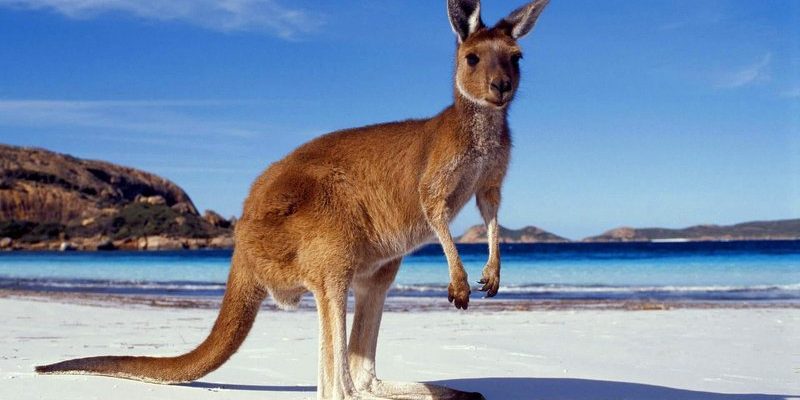
Kangaroos are often thought of as cute and cuddly animals, but they’re also vital players in their habitats. Think of them like nature’s lawnmowers, helping to manage vegetation while also serving as prey for larger predators. By looking at their roles in their ecosystems, we can gain a better appreciation for the interconnected web of life. It’s fascinating to see how these animals influence not just the land they roam but also the myriad of species around them.
Grazers of the Grasslands
Kangaroos are primarily herbivores, meaning they eat plants. Their diet consists mainly of grasses and leaves. This grazing habit is crucial because it helps maintain plant health. When kangaroos munch on grasses, they promote new growth. You might be wondering, how does this benefit the ecosystem? Well, healthy grasses help reduce soil erosion and improve soil quality, which is essential for other plants to thrive.
Their grazing patterns are also interesting. Kangaroos often graze in groups, which can help distribute their feeding pressure across a broader area. This means they aren’t just stripping one spot bare, allowing plants a chance to recover. They also contribute to seed dispersal. As kangaroos eat fruits and seeds, they inadvertently help move these seeds around, promoting plant reproduction and increasing biodiversity.
This grazing behavior can also impact other species. By keeping grasslands trimmed, kangaroos create open spaces that other animals, like birds and reptiles, can use for nesting and shelter. It’s like they’re gardening for their entire community!
Kangaroos and Predator-Prey Dynamics
Kangaroos aren’t just vital because of what they eat; they’re also crucial players in the predator-prey relationship. As prey for large carnivores, like dingoes and eagles, kangaroos provide essential food sources for these predators. This relationship helps maintain balance in the ecosystem. When there are too many kangaroos, their grazing can lead to overgrazing, which can harm the environment. Predators help control these numbers.
But here’s the thing: if kangaroo populations decline, it can disrupt the entire ecosystem. For example, if dingoes have fewer kangaroos to hunt, their populations might also decrease due to lack of food. This can lead to an increase in smaller herbivores that can overgraze and damage vegetation, leading to soil degradation. So, the health of kangaroo populations directly affects a variety of other species and habitats.
Furthermore, kangaroos have shown fascinating behaviors when under threat. They can communicate alarms to warn others in their group, demonstrating their social nature and the importance of communication in maintaining the dynamics of their ecosystems.
Impact on Plant Diversity
Kangaroos play a significant role in promoting plant diversity. As they graze, they tend to prefer certain species of grass over others. This selective grazing can lead to a more varied plant community, which is beneficial for the ecosystem. Greater plant diversity means more habitats for insects, birds, and other wildlife, promoting a richer ecosystem.
You might think of it like a buffet. When kangaroos graze on a variety of plants, they help create a more diverse menu for other animals. Additionally, some plants have adapted to being grazed, developing stronger roots or faster regrowth capabilities. This adaptation helps maintain ecosystem resilience, ensuring it can bounce back from droughts or wildfires.
Moreover, a diverse plant community helps support the overall health of the soil. Different plants contribute various nutrients and minerals, which boosts the soil’s fertility. Healthy soil leads to healthy plants, and this cycle continues, benefiting not just kangaroos but the wider ecosystem.
Water and Habitat Management
Kangaroos also play a role in managing water resources in their habitats. By grazing, they can help prevent overgrowth that would otherwise obstruct natural water flow. This keeps waterways clear and helps maintain a healthy ecosystem. You might not think of kangaroos as water managers, but their movements and behaviors can affect how water is absorbed and utilized in the environment.
Additionally, kangaroo populations can influence the density of vegetation near water sources. When they graze near these areas, they can keep the growth in check, ensuring that plants do not overly encroach on the water. This balance is crucial for not just the kangaroos but for all wildlife that relies on those water sources.
When water availability is optimized, it supports a healthy habitat for many species, from birds to insects. So, in a way, kangaroos are like nature’s stewards, helping to regulate water resources.
Conservation and the Future of Kangaroos
While kangaroos fulfill numerous roles in their ecosystems, their populations face significant threats from habitat loss, climate change, and hunting. Conserving kangaroos is not just about saving a species; it’s about protecting an intricate web of life that depends on them. When we take steps to preserve their habitats, we’re also safeguarding plant diversity, predator-prey dynamics, and water management systems.
You might be wondering how you can help. Supporting conservation efforts, promoting sustainable land use, and raising awareness about kangaroo protection are all steps we can take to ensure their survival. Every small action counts, especially when it comes to protecting nature’s balance.
Ultimately, realizing the full impact of kangaroos on their ecosystems can help us appreciate these unique animals. They’re not just symbols of Australia; they’re vital cogs in the intricate machinery of nature.
Kangaroos are more than adorable creatures that hop around; they are essential players in their environments and serve as a reminder of how interconnected all life is. Understanding their role can inspire actions that help protect them, ensuring a balanced ecosystem for generations to come.

